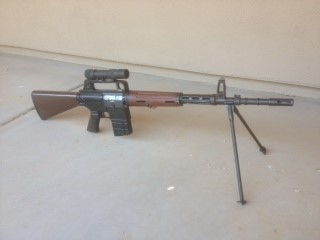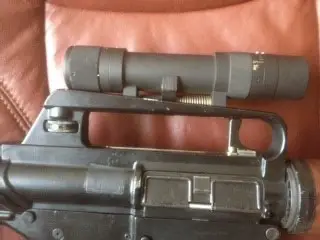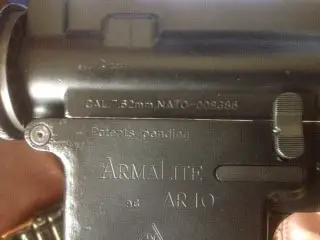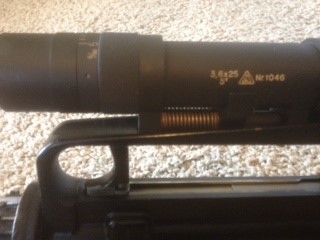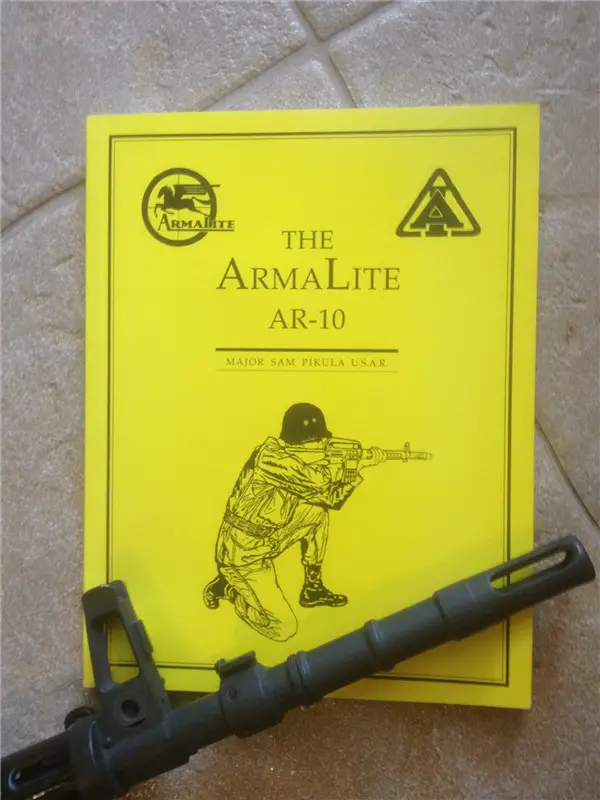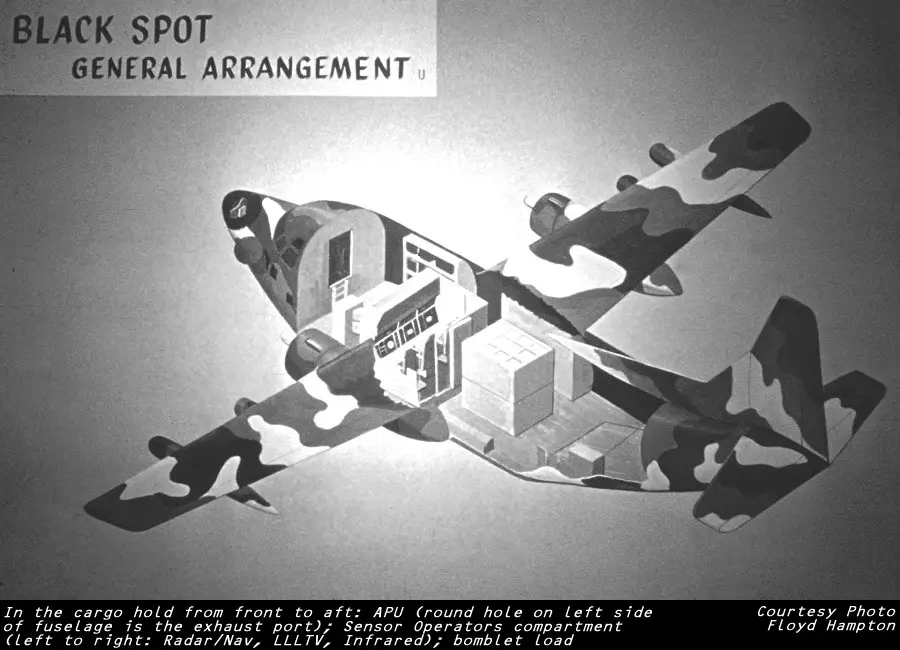In an interesting commentary that accompanies the third in an ongoing series of videos he did on Winchester’s also-ran G30M rifle and related prototypes, Ian McCollum at Forgotten Weapons reports these results from the 1940 Marine Corps tests of then state-of-the-art M1 Garand and Johnson semi-automatic rifles.
Ultimately the trials were won by the Garand, with the G30M placing third in total malfunctions and broken parts. This had involved 37 different tests and more than 12,000 rounds through each rifle. The Garand had 1,480 total malfunctions and 49 parts broken, replaced, or repaired. The Johnson had 1,547 and 72 respectively, and the G30M 2,864 and 97 (roughly double the number of problems as the Garand).
These numbers are indicative of just how far we’ve come in firearms reliability in ¾ of a century. This table shows (assuming 12,000 rounds as our denominator, which is close enough because our purpose here is comparison) that as reliable as those rifles were for their day, hey were pretty buggy by today’s standards. Looking at the percentages really makes the data pop.
Assuming a “malfunction” equals a stoppage, we’ll label those percentage of stoppages and we’ll label the parts breakages “failures.”
USMC Rifle Test 1940
|
Rifle |
Stoppages |
Failures |
||
|
# |
% | # |
% |
|
|
Garand |
1480 | 12.3% | 49 | 0.4% |
|
Johnson |
1547 | 12.9% | 74 | 0.6% |
| Winchester | 2864 | 23.9% | 97 |
0.8% |
Now, those numbers are good for the era! As you might expect, the Garand, which had had the most development, was the most reliable, with the Johnson closely behind. The Winchester prototype, designed by Ed Browning and updated by David Marshall Williams, was about twice as prone to stoppage and breakage as the Garand, but as you can see if you watch Ian’s video of these rare prototypes at the Cody Center, they were pretty raw, hand-tooled prototypes and probably could have been further improved with more time. Like the Johnson, though, they were out of time, pursuing the pretty-darn-good M1 Garand in an adoption stern chase in which they had no chance of overtaking the leader, unless they were really strikingly better at something. But the advantages of the Johnson and Winchester designs were small, and on key reliability numbers they were at a disadvantage.
But the think that really struck us is, how much less reliable these 1940 weapons were than a modern AR or AK. While many other things have been improved in service rifles since the 1940s, rifle reliability is probably the greatest. Yes, you can seize up an M4 pretty good if you burn through hundreds of rounds on cyclic rate, but you’d be doing immediate action a lot more often on a World War II era rifle.
This is borne out by data from the many, many M16 and M4 tests. For example, in the worst M4 test ever, the notorious and outlying 2007 extreme dust test, ten M4s fired 6,000 rounds per rifle with 1.4% stoppages. (You can download the .ppt of the test results at this post at The Firearm Blog).
And this number was over 4x the number of failures in an earlier iteration of the same test, a result the Army Research Lab has never explained insofar as we know.
Now we can’t compare the 1940 and 2007 tests directly and say that the M4 is nearly ten times more reliable than the M1. But we are pretty confident that an apples to apples test would show the new rifle as significantly more reliable.
It is also our experience, although we can’t back it up with bench data, that the current rifles like the M4 and the AK-74 are substantially more reliable than 1950s and 1960s rifles like the FN-FAL, H&K G3, and M16A1.
Of course, if you want reliable cycling, it’s hard to beat the rifle the Marines used as a control in the 1940 tests — the US Rifle Cal. .30 M1903, your basic turn-bolt Mauser action.
This is completely aside from the points Ian was making in his great series of videos. Certainly the Marines, like every armed service, tried their best to give their servicemen a rifle that was the State of the Art, and their combat performance with that rifle bears out the judgment of their ordnance officers and the Commandant at the time. That the Marines no longer carry the once-beloved M1 just proves that today’s ordnance officers and Commandant are still trying to give their servicemen (and now, -women) a rifle that is the State of the Art.
In monarchies, the passing of a monarch is often announced with a cry: “The King is dead. Long live the King!” Maybe that’s how we should think about service rifles? The 1903, M1, M14, M16 and now M4 have all worn the crown. One day, the M4 will pass on to the museums and some future counterpart of Ian will study it, but a new King shall sit upon the rifle throne.
via Forgotten Weapons, which you guys are reading every day… right?
When Guns are Outlawed, Only Outlaws will have Wooden Panels
That’s what it was, witnesses agree: a green, 6½-foot wooden panel which came sailing down under a clear blue sky and slammed into a man’s head. The New York Post says:
Sources say the victim, described as a male between 60 and 70-years-old, was walking northbound on Fifth Avenue near 30th Street around 4 p.m. when a green, six and a half foot wooden panel became loose from a surrounding safety wall and struck the victim in the head. The man fell to the ground near the road, bleeding.
The panel pulled off from a safety wall. God does mock our pretensions from time to time, doesn’t He?
“There is a lot of blood on the ground,” an on-site worker said. “They put sand on the ground to cover it up.”
Witnesses said two women attempted to keep the man awake while another man diverted traffic.
The victim was reportedly groggy, but remained alert and conscious throughout the entire ordeal and was transported to Bellevue Hospital by emergency units for further evaluation.
The condition of the victim was unknown at press time.
Deception, Red Army Style
 There are many disciplines in intelligence, including all of the intelligence modalities or “INTs,” counterintelligence (which can be defensive or offensive, strategically and operationally speaking), and deception. The Anglo-American deception related to D-Day, which was first revealed in depth in the 1970s in books like Anthony Cave Brown’s Bodyguard of Lies, is probably the most familiar deception operation known to our readers. But the Russian history of what they call maskirovka evidences a durative doctrinal history continuing more or less unabated from Tsarist times through the entire Soviet experience, to the Russian experience in the Near Abroad today.
There are many disciplines in intelligence, including all of the intelligence modalities or “INTs,” counterintelligence (which can be defensive or offensive, strategically and operationally speaking), and deception. The Anglo-American deception related to D-Day, which was first revealed in depth in the 1970s in books like Anthony Cave Brown’s Bodyguard of Lies, is probably the most familiar deception operation known to our readers. But the Russian history of what they call maskirovka evidences a durative doctrinal history continuing more or less unabated from Tsarist times through the entire Soviet experience, to the Russian experience in the Near Abroad today.
Some of this may be based on Russian cultural characteristics: never be simple or straightforward when complexity is a possibility! But it’s too pat and too glib to dismiss maskirovka as simply Crazy Ivan doing his thing. Ivan’s not crazy, he’s clever; and his thing has largely worked for his country under overall leadership of widely varying outlook and, frankly, quality, against enemies that were even more variable yet.
David M. Glantz, COL, USA, Ret., is the editor of The Journal of Slavic Military Studies which was formerly, in Cold War days, a USG-sponsored review of Soviet Russian military doctrinal, historical and theoretical professional publications. A couple of months ago, he brought forth an early Soviet maskirovka publication, Krasniy Maskirovchik, from 1923:
http://www.tandfonline.com/doi/pdf/10.1080/13518040802695241
Glantz’s analysis of this document was posted at the occasionally interesting War on the Rocks website a couple of months ago.
The word “maskirovka,” like its counterpart “razvedka,” which encompasses the broad realm from tactical reconnaissance to all levels of intelligence, is typically Russian in the sense that it describes a wide range of actions aimed at deceiving enemies in peacetime and wartime. As such, it encompasses every deceptive measure ranging from simple camouflage through sophisticated strategic deception. Even though later Soviet and Russian military theorists would supplement this term with broader new concepts such as obman [fraud] and zhitrost’ [cunning or ruse], at the time this magazine was published, “maskirovka” was the catch-all term applicable to anything done in peace or war to fool any real or imagined enemy.
For more from Glantz, on other subjects, and more on history including some new-ish thoughts on Stalingrad, an awkward and hard-to-navigate archive of The Journal of Slavic Military Studies is available online. We did find some articles free to download, but some of the .pdfs came across deformed. (In that case, we found that the HTML version was legible).
Bubba “Mills” an 80% Lower
The Continuing Adventures of Bubba the Gunsmite have taken a new direction, towards home manufacture of the venerable AR-15. To Bubba’s surprise, it did not work.
Bubba does spend an inordinate amount of time at his gun smiting bench in a state of surprise.
That’s one to challenge the Association of Firearms Toolmarks Examiners. Identify that dog’s breakfast. If you can.
Possible reasons for this outcome:
- It’s Bubba. Say no more.
- Made in Colorado, where standard capacity mags are banned, but operating metal-cutting machinery while stoned out of your gourd is perfectly legal.
- Bubba was fibbing when he compared his hands’ grip to a vise.
- Al alloy + Judgment Juice™ + drill press = this monstrosity.
- He took thalidomide whilst pregnant with an AR-15.
- New MA(ura) legal AR: no parts interchange with a real one, and it can’t shoot.
- This is the good one, you should have seen his first ten attempts.
Wednesday Weapons Website of the Week: WWII after WWII
 One of the greatest things about being a kid growing up in the 1960s, was the “Army Navy store”. As late as 1975, 30 years after VJ Day, these stores were still full of piles and boxes of new equipment that had been made for World War II, but then disposed of afterwards because, with the war over, no one was going to need to equip an army of millions of men any time soon.
One of the greatest things about being a kid growing up in the 1960s, was the “Army Navy store”. As late as 1975, 30 years after VJ Day, these stores were still full of piles and boxes of new equipment that had been made for World War II, but then disposed of afterwards because, with the war over, no one was going to need to equip an army of millions of men any time soon.
It was a boy’s paradise — everything from huge, double-sized BAR mockups to M1 Rifle grenade-launcher sights, new and in the wrappers or cosmoline, all for a minute percentage of what Uncle Sam had paid for them.
Bigger things were sold off, too: after the war, air races featuring leftover fighters were common. One race pilot, Tony LeVier, bought an F-5 (a photoreconnaissance version of the P-38) for, if we recall right, $1,500 and entered it in these competitions. He had his choice of hundreds of the planes; the vast majority, the ones that didn’t become race planes or rich men’s toys went to the smelter.
Transport planes, available for pennies on the dollar, launched almost all postwar airlines. Warships went into mothballs, but auxiliaries had short, expendable careers hauling freight and launched many a Greek shipping fortune. The reuse of all this valuable leftover World War II kit is the point of tonight’s Wednesday Weapons Website of the Week, WWII After WWII.
Militaries, of course, reused World War II gear in many ways themselves, and for a very long time. And the superpowers and colonial powers delivered their surplus tanks and artillery pieces to their allies, colonies, or new states with which they wanted to curry favor. The Israelis used (extensively improved) Sherman tanks in reserve units as late as the Yom Kippur War of October, 1973. And here’s a wartime Soviet SU-100 — just captured by these -2) Houthis in Yemen in 2014.
That SU-100 photo comes from onight’s remarkable Wednesday Weapons Websit eof the Week, which is called “WWII After WWII” and tries to document the long tale of consequences for World War II weapons and their makers, from Navy carrier tests of the German A-4 (V-2) missile, to the decline and fall of aircraft makers Curtiss-Wright (made from the merger of the two earliest American aircraft industrial firms) and Brewster. Curtiss-Wright made a series of bad product decisions that ultimately left it with nothing to sell. But with Brewster, the leadership was so bad (and so crooked) that the quality of decision-making barely registered among the reasons for failure. They hired con men (released from prison!) as salesmen, for one thing: never a solid basis for a going concern, that.
We’re not surprised to see trade unionism also implicated in Brewster’s demise:
The lowest point came on 23 August 1943, when the local United Auto Workers union at the plant went on strike, breaking the overall nationwide “no strikes until victory” motto. The strike was due to petty gripes between union security guards and US Coast Guard personnel patrolling the base. The saddest spectacle was a horrifying interview that the local union boss, Thomas de Lorenzo, gave to the Washington Post newspaper. He stated with no shame that he was fine with American troops dying because of the strike, as long as union privileges were preserved. The national UAW quickly distanced itself from the strike which ended shortly thereafter. (de Lorenzo’s big mouth attracted IRS attention and he was later jailed for income tax fraud.
For all that we’re willing to believe the worst of the UAW, under the labor-friendly Roosevelt Administration almost all wartime industrial plants were unionized, and apart from some difficulties with the mine workers, American union leaders and union men did their part and produced for the war. In this, as in so many things, Brewster was unique in its ruin.
Henry Kaiser actually managed to turn Brewster around, to a degree. But when he was called on to more urgent tasks, it collapsed back into incompetence and ruin, a tale told well by WWII After WWII.
It’s not all tanks, airplane factories, and German missile technology at WWII After WWII. If you’re interested in small arms, here’s some insight on the postwar careers of the British Lanchester submachine gun (which sailed on into the 1970s with the Royal Navy, and had several foreign connections), and the German StG 44 in Africa, and an interesting case study of German weapons in Viet Cong use.
Difference Between SEALs and SF (Serious)
Here’s a recently retired SF LTC describing the (we’d say “a”) key difference between SF and SEALS. Probably good for the general public, who’ve seen a lot of frogman propaganda (some of which makes the frogs themselves roll their eyes) lately.
We’d also like to note that he misses one of the big differences, and that’s that SF is primarily a terrestrial operation. Sure, we do air or maritime ops to get to work, but the SEALs have a maritime capability that is quite literally without equal, not just in the United States but probably in the world. (Some of our NATO allies have some excellent maritime SOF capabilities, but they’re different from what the frogs inherit from their UDT ancestors and have developed in some amazing directions).
UPDATE
OK, we’re having trouble with the embed code, the video can be seen on Business Insider, maybe we’ll have time to hack at it this evening.
http://www.businessinsider.com/differences-between-green-berets-navy-seals-2016-6
When Guns are Outlawed, Only Outlaws will have Drug Cravings
 We give you April Corcoran, Mother of the Year. Washington Post, take it away:
We give you April Corcoran, Mother of the Year. Washington Post, take it away:
“I can honestly say that, in three-and-a-half years on the bench, this is by far the worst thing that has come before this court.” So said Judge Leslie Ghiz of Ohio’s Hamilton County Pleas Court as she sentenced April Corcoran to 51 years to life in prison Tuesday, reported the Cincinnati Enquirer.
Look, judges and cops are always saying, “This is the worst one,” the ultimate limit, they’ve never seen worse, etc. etc. Is this just judicial hyperbole in this case? We mean, what did this woman do that got Judge Ghiz all wound up?
Corcoran, 32, had pleaded guilty in June to raising money to feed her heroin addiction by loaning out her 11-year-old daughter to her drug dealer, who, with the mother’s blessing, raped, sodomized and abused her, sometimes videotaping it, according to the indictment against Corcoran.
Jesus. H. Christ. On a flaming syringe. Her own daughter!
The preteen was being forced to have vaginal, anal and oral sex with a 40-year-old man. The mother pleaded guilty to multiple counts of complicity to rape, human trafficking and child endangerment.
OK, maybe the judge is right, and this is the worst.
“But wait!” as Ron Popeil might say. “There’s more!” Oh, please, no.
Because he preferred children younger than 11, prosecutors said, the mother dressed her up to look even younger, reported WLWT TV. “Little did we know, I guess, her drug dealer had a propensity to film little kids when they are performing sexual acts on him,” Assistant Hamilton County Prosecutor Katie Pridemore said at the time of the plea. “She didn’t have the means or the cash to buy her heroin anymore from her drug dealer,” said Pridemore. “….So she offered up her child in return.”
The courts have been enervated by decades of misguided tikkun olam easing the sufferings of prisoners and convicts. There is no appropriate sentence for this maternal monster, because the threshold of justice in her case crosses right into the terra prohibita that the ostriches have defined as “cruel and unusual.” Ostriches? What else to call those who refuse to look on this extreme end of human misbehavior, lest they should have to admit what punishment Justice demands in this case.
“You showed no kind of mercy,” the judge told her, according to the Enquirer. ” …. I don’t know that you grasp the damage that has been done to this poor child.”
And then, of course, he proceeded to wrist-tap Corcoran, because a wrist tap — a 51-year-to-life sentence is a wrist tap in this case, and she could be out in some small percentage of that — is all the law admits to be meted out to a monster like Corcoran.
Did we tell you, there’s more? And it’s even more evil, or perhaps as evil in a new direction — the criminals of the world seem intent on exhausting our supply of comparatives and even superlatives, don’t they?
Corcoran had a special routine after her daughter was brutalized. As a “reward,” she gave her daughter heroin, the court was told. “Sometimes this defendant would give a little bit of heroin to her daughter,” Pridemore told the court. “The daughter didn’t want it but she said, ‘you’re a good girl. You did the right thing.’”
The middle-schooler vomited each time.
Jesus. H. Christ. Yes, we’re aware we said that already, it just seemed like by the time we scrolled down this far, another prayer was in order.
This happened four times between February and June 2014. Corcoran has not expressed any apologies to her daughter, the judge said in court Tuesday.
 Hey, what’s to apologize for? Isn’t the Washington Post in favor of early sex education? Corcoran and her boyfriend/dealer, one Shandell Willingham (left), were just homeschooling the kid in that subject!
Hey, what’s to apologize for? Isn’t the Washington Post in favor of early sex education? Corcoran and her boyfriend/dealer, one Shandell Willingham (left), were just homeschooling the kid in that subject!
And the drugs? Why, what about ’em? Surely the Post can’t have a problem with sharing?
Hmm. How do you think the kid is doing?
Now 13 years old, the girl is living out of state with her father and stepmother. She is taking medication, has had suicidal thoughts and is undergoing medical care, Ghiz said in court Tuesday. There’s doubt she will be able to cope.
Doubt, my eye. The girl is going to be as screwed up as the Pentagon, for life.
“I saw my granddaughter. I heard her small voice,” the girl’s grandmother said in court. “It was horrific. How could she (Corcoran) do this? I don’t know if my granddaughter is going to be able to have a normal life.”
She isn’t. We’ve encountered a number of these victims as adults. Each was a basket case in her own way, but basket cases they were.
The authorities learned of the case in June 2014, when the girl moved in with her father, who reported it.
Now, if you’ve read this far, your ability to feel shock and dismay probably has a bunch of fibrous scar tissue on it by this point, but we’re going to shock you one more time.
The girl’s plight didn’t shock locals in the rural area of Ohio where Corcoran lived, the paper reported at the time of her arrest. “I mean, things like this happen a lot down here,” resident Keith Benson said. “Probably not to this degree, but there’s constantly being reports of animal abuse and fights breaking out around. It’s a little bit surprising but not entirely unexpected.”
To recap: this girl’s mother pimped her out for drugs, tried to get the kid hooked on heroin too, and the Man In Da Street that the Post finds says that’s “not entirely unexpected.”
Our Article III (and the State equivalent) courts don’t have the powers to levy an appropriate sentence in cases like this. An April Corcoran requires a judge with the imagination of Caligula, who can match her depravity for depravity, and conclude the matter, with the human race conclusively cured of the infection that is April Corcoran.
Anything else may be process, but it is not justice.
How Insurgencies are Broken
“Is it safe?” Torture makes for great entertainment, but it’s seldom needed to roll up an insurgent network.
We bumped into an interesting post at a blog called The Lizard Farmer on the subject of COIN intelligence TTPs. He uses the example of an imaginary Texan resistance cell and describes how intelligence practitioners would roll up a would-be “militia” unit. They do this without even a State of Emergency, or tapping the NSA liasons’ at the fusion centers’ direct warrantless access to domestic mass phone and digital surveillance. They just apply the tactics, techniques and procedures that police use now to close criminal cases, which are very close to what intelligence organizations use to unravel, expose, and annihilate insurgent entities.
His specific example begins with a dead body found after a small unit contact. The decedent was sanitized of serial numbered equipment, electronics, ID and identifying marks, and had even defaced his fingerprints. But he still was the thread they pulled to unravel his entire cell. In the end, modern technology (and psychology) have made no man an island — not even a dead man.
He concludes:
These tactics are how insurgencies are broken. They’re what enabled the system to pin Bin Laden down, catch the Tsarnaevs, and identify drone strike targets in the middle east.
We have to interrupt here to say two things about the Tsarnaevs — they were not caught until after they acted, and there was no great effect of the intelligence effort to hunt them. They were caught because they got in a gunfight with the cops; one (Speedbump) was killed, finished off when his brother ran him over, and one (Flashbang) wounded badly enough that a citizen found him and turned him in, after a botched Gestapo-style house-to-house razzia failed to find him.
Networks are deadly to an insurgency. Even operating in meatspace can be deadly without the right precautions. All it takes is for one person to use that phone to call or that debit card to pay and they’ve been nailed in time and space. Sure you may be using your regular phone (and not your disposable one) to call ma but you’re there and the records show it. And if your battle buddy does something similar he’s fixed at that time and place as well – so now both of you are associated. The key is discipline. When you meet you go completely off the grid. Completely. No phone use, no debit card use, nada in and around the geographic area and timeframe you meet. Recon and identify how you could expose yourself. Does a certain route have license plate readers? Then don’t use it. Convenience stores? They all have cameras at the counter and pumps. Nearby ATM machine? Cameras and transaction records. The golden rule at all times (and I mean all times) is to ask yourself: How will what I’m doing at this second expose myself and others to identification?
via How They Hunt | The Lizard Farmer.
Emphasis was in the original. Note that already the police work around legal restrictions on using “forbidden” or warrantless unlawful surveillance by the fiction of “parallel construction,” which means, quite literally, presenting false records to the court that were generated to plausibly explain government possession of illegally collected data. Parallel Construction is not a novel GWOT era technique but was used at least as early as the early 1990s in drug cases, both running warrantless wiretaps against organized crime figures and using military intelligence assets against domestic crime groups. In those cases, it was justified in part by a drug case carve-out to Posse Comitatus engineered into being in the 1980s, but once they began doing it they were on the slippery slope of doing it whether they had a drug nexus or not.
The 1990s-vintage botched raids at Waco and Ruby Ridge both used military assets (physical and human) acquired by ATF and FBI agents simply lying and manufacturing a nonexistent “drug nexus” to get what they wanted. They were coached in this by DOJ lawyers (which should be a reminder to you that a lawyer is a man who is trained to lie for a living; that’s why they do so well as politicians). And these seemingly extreme measures of the 1980s and 1990s were taken in the face of routine and small-time crime. You may rest assured, you would-be revolutionaries, you, that the gloves would come off in a shooting insurgency, and you haven’t seen gloves-off yet.
In some ways this is new; in others, it is as old as the Roman suppression of the Jews 2,000 years ago. A good overview of the techniques, minus the modern technology, can be found in the movie, The Battle of Algiers, and that puppy’s over 50 years old.
Even now, in the FBI, which is increasingly redefining itself as the Sword and Shield of The Party1, monitors what it calls “extremists” and is making long lists of who it would like to round up, when The Party lets slip its leash. Erdogan isn’t the only one who had an “enemies list” cued up for neutralization.
So, if you are, say, an antiauthoritarian personality, if the will to resist is strong in you, what can you do without winding up on a slab like “Bob” in Lizard’s post, or in a death-row holding cell like his brother, or having his kids passed to the probable molesters of the state’s Child “Protective” Services like Bob’s brother’s kids?
One notes that the FBI has been extremely poor at detecting troublemakers who act alone. This is a general truism of police work. Criminals get caught because they interact: they talk, and seal their fate; they associate with other criminals, and the capture of one gives investigators a powerful lever with which to pry loose the rest.
Or, to put it in the words of an old western movie, if you’re going to shoot, shoot. Don’t talk.
Notes
- You may have heard that phrase before. We were reminded of it by the Bureau’s reluctance to support a prosecution of Mrs Clinton for a more egregious version of an offense that it has arrested and helped imprison several for every year of the last decade, while snapping-to immediately in pursuit of the hackers that embarrassed The Party. The former alone might simply have been a case of how the Beltway operates increasingly on a Code of Hammurabi type law, with “different spanks for different ranks.” But in conjunction with the second, and various other activities, it’s clear that FBI is increasingly comfortable viewing itself as a partisan political police. People fear a military coup in the United States, but that is very unlikely; however, the Bureau’s higher echelons are starting to see themselves as the Praetorian Guard.
AR-10 Sniper Reweld — On GB and Sold in a Flash
Seeing that this had already come, and gone, on GunBroker, was a bit like being King Arthur and the boys and hearing that the French knight would not join our quest for the Holy Grail, ’cause “‘E’s already got one.”
Some lucky knight has now got the Holy Grail of early AR collecting, albeit a rewelded semi-auto version; but it’s as near as an ordinary mortal will get to the original as long as the Hughes Amendment stands.
Well, here it is, deep from the recesses of my collection, the legend of legends……………….For sale one each original 1960 Portuguese AR-10 sniper rifle manufactured by “Artillerie Inrichtingen (AI) of Holland.
No-this isn’t a pretend AR-10 such as the contemporary Armalite, DPMS, or any of the other .308 AR-15’s, THIS IS A REAL AR-10. Original AR-10’s in and of themselves are scarce; this is an EXTREMELY RARE sniper rifle.
He’s got a point there. The only other one of these we’ve seen was in a government museum.
I’ve had it since 1995 (which is the last time I shot it) and it’s time to pass it on to somebody else. The rifle is complete and original. The lower receiver was expertly welded together from an original band saw cut and de-milled Portuguese AR-10 by Lloyd Hahn who received permission from the ATF before he did the work so it’s all done in compliance with the law (I don’t do “grey area’s).
Unlike the various after-market AR-10 receivers such as Central Kentucky Arms, Specialty Arms, H&H, Telco, Sendra, etc. this actually looks like an original AR-10 lower (cuz’ it mostly is) receiver markings and all.
The aluminum H&H is pretty good, but it doesn’t duplicate the original markings, except for the serial number.
SCOPE-original Delft, 3.6 X 25, excellent condition with clear optics
*UPPER RECEIVER-a real sniper upper (in case somebody should ask, it would next to impossible to correctly machine the proper sniper scope cuts in an ordinary Portuguese upper) *You may notice a piece of tape behind the ejection port in the photos, no it ain’t holding the rifle together ;-)I put that on in 95’ to mitigate any brass “dings” on the upper receiver.
BARREL-NO Shaw repro, it’s a very good condition Portuguese with a shiny bore (most Portuguese aren’t)
Again, the seller is on the level here. Our AR-10 barrel is “pretty good for a Porto” and the usual run of them is more in the “what were they doing with these things, growing potatoes?” condition.
STOCK-Unlike most Portuguese stocks this one has an excellent rubber butt pad. There are however several very small cracks in the stock which have been expertly repaired.
The early fiberglass stocks were brittle and the resin degraded under ultraviolet light.
HANDGUARDS-The fiberglass is in excellent condition with no cracks or scuffs, most Portuguese bipod handguards are a little “scruffy”, this is the best Portuguese bipod handguard I’ve ever held in my hands.
Haven’t seen one this good (including the one in the museum), ourselves.
Bipod-good-very good condition fully functional with no rust, mostly original finish. MAGAZINES-four come with the rifle.
Well, at least we’ve got more mags than that.
Thanx for looking! PS-This is the same sniper rifle which was featured in the book, “The ArmaLite AR-10 Rifle”. Hit “Buy it now” and I’ll throw in the book with the sale,
via ORIGINAL ArmaLite AR-10 SNIPER Rifle (Portuguese) : Semi Auto Rifles at GunBroker.com.
The “Buy It Now” price was $12,000, and the running joke is that half of it was for the rare Maj. Sam Pikula book. (Which has fortunately been replaced, finally, by a better book after decades out of print).
Exit question: was the knight in question Reed Knight? He has most variants of AR-10 in his collection, but we don’t think he had the ultra-rare sniper.
“Black Spot” and Night Battlefield Dominance
 In 1967, the Air Commandos began to develop a night special operations gunship capability called Project Black Spot. They leveraged the capabilities of primitive imagery intensifiers to create an aircraft that could defeat the darkness and interdict enemy movement in areas where the threat situation was too “hot” for a low-and-slow-flying fixed-wing gunship. While a couple of these areas were obviously the Ho Chi Minh Trail in Laos and Cambodia, the ship was also used to hunt clandesting agent-landing boats off the coasts of South Korea.
In 1967, the Air Commandos began to develop a night special operations gunship capability called Project Black Spot. They leveraged the capabilities of primitive imagery intensifiers to create an aircraft that could defeat the darkness and interdict enemy movement in areas where the threat situation was too “hot” for a low-and-slow-flying fixed-wing gunship. While a couple of these areas were obviously the Ho Chi Minh Trail in Laos and Cambodia, the ship was also used to hunt clandesting agent-landing boats off the coasts of South Korea.
The airframe selected was the Fairchild C-123K Provider, which after modification was called the NC-123 (formal name) or AC-123 (as used by crews). Instead of side-firing guns, the Black Spot birds had cluster bomb unit (CBU) dispensers and carried a war load of over 6,000 1-lb dual-purpose CBUs, of which 24 could be delivered (2 x 12-unit racks) in a single pass. The CBU racks could then be in-flight reloaded by the crew.
Some sources say three airframes were modified, but only two show up in most references: 54-691 and 54-698.
The key to the system was the sensors: X-Band Radar, Doppler terrain-following radar, night-vision Forward Looking Infrared Radar (FLIR), night-vision Low Light Level TV (LLLTV), a Radar Homing and Warning (RHAW) countermeasures device, and a laser range-finder/illuminator. Some of these systems were new, and some had been developed for strategic bombers, but taken together they greatly improved the situational awareness of the crew.
In a harbinger of what was to come, the the TFR, FLIR and LLLTC were housed in a gimbaling “ball” in the nose.
The outcome of the Korean tests is unknown. The Vietnam theater tests were successful, despite the aircraft having gross weight and density altitude limitations. In addition, a limitation of the cluster bomb dispenser required the pilots to fly the plane at 4,800 feet — no more, no less.
At the end of the test, the NC-123s were converted back to ordinary C-123K trash haulers. All of the sensors proven on the NC-123 were used in subsequent gunships.
Not all experimental sensors from this period went forward. Black Crow, for example, was a truck-ignition detector that zeroed in on the ignition “noise” produced by unshielded wires in the typical Otto-cycle gasoline engine’s spark-ignition system. It was deadly effective on the trucks of the Ho Chi Minh Trail, but wouldn’t work on newer trucks. Black Crow was only installed on -698, but did become standard on the AC-130s for a time.
Proving this technology on large airplanes like transports and bombers was necessary and laid fundamental groundwork for US dominance in low-light sensing systems in present years. It is a matter of some concern that, while we continue to exploit, miniaturize and field these 1960s technologies, the rate of development has slowed, and we’re resting on our, sometimes 1960s-vintage, laurels.
Sources
Chinnery, Philip D. Air Commando: Inside The Air Force Special Operations Command. London: Airlife Press, 2008. pp. 210-218.
Johnson, E.R. American Attack Aircraft Since 1926. Jefferson, NC: McFarland & Company, 2008. pp. 210-211.
Images found here and there on the internet.

Kevin was a former Special Forces weapons man (MOS 18B, before the 18 series, 11B with Skill Qualification Indicator of S). His focus was on weapons: their history, effects and employment. He started WeaponsMan.com in 2011 and operated it until he passed away in 2017. His work is being preserved here at the request of his family.





